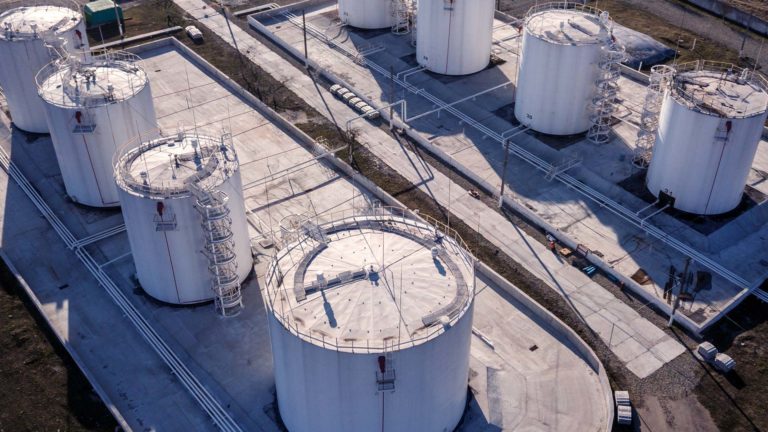How Tank Welding Inspection Avoids Future Structural Failings
How Tank Welding Inspection Avoids Future Structural Failings
Blog Article
An In-depth Introduction of Tank Welding Inspection Specifications and Methodologies for Improved Weld Quality and Efficiency
The significance of welding examination standards in the production of containers can not be overemphasized, as they serve as the backbone for guaranteeing weld honesty and operational dependability. Numerous evaluation methods, including aesthetic evaluations and progressed non-destructive testing methods, are important in identifying prospective problems that might endanger efficiency.
Relevance of Welding Assessment Criteria

Welding evaluation standards include a series of requirements, consisting of product specs, welding treatments, and certifications of workers associated with the welding process. By applying these requirements, organizations can methodically determine and fix potential defects, thereby lowering the likelihood of expensive repair services or disastrous failures. Strenuous evaluation techniques foster a culture of accountability and accuracy, motivating welders to maintain high levels of workmanship.

Typical Welding Examination Strategies


Ultrasonic Testing (UT) is an additional prevalent strategy, making use of high-frequency acoustic waves to spot interior flaws that may not show up on the surface. This technique is specifically effective for identifying voids or additions within the weld metal. Magnetic Bit Evaluating (MT) is also extensively used, especially for ferromagnetic products, as it reveals surface and near-surface problems through the application of magnetic areas and ferrous particles.
In Addition, Fluid Penetrant Testing (PT) detects surface-breaking defects by applying a penetrant to the weld and afterwards utilizing a programmer to extract the penetrant. Each of these techniques adds to a thorough examination method, making sure that welds satisfy the strict quality criteria called for in tank construction.
Governing Criteria and Conformity
Regulatory criteria and conformity are crucial components in guaranteeing the safety and dependability of bonded structures in tank read building - Tank Welding Inspection. These criteria offer to establish minimum demands for product homes, welding procedures, and inspection methods, thereby lowering the threat of architectural failings and improving total efficiency
Secret organizations, such as the American Culture of Mechanical Designers (ASME) and the American Welding Culture (AWS), provide standards that are widely taken on in the industry. Compliance with these criteria not only guarantees adherence to ideal practices but additionally meets lawful and legal commitments, securing the interests of stakeholders.
Regulatory bodies usually mandate adherence to specific codes, such as ASME Code Area IX for welding credentials and API 650 for welded containers. These codes describe needs for welding techniques, credentials of personnel, and testing methods to validate weld stability.
Routine audits and evaluations are crucial to maintaining conformity, as they assist identify inconsistencies from developed standards. Non-compliance can cause substantial charges, job hold-ups, and security hazards. Therefore, a robust understanding of governing requirements and a commitment to conformity are critical in attaining high-grade and resilient bonded tank structures.
Non-Destructive Testing Methods
Just how can the honesty of bonded structures be assured without creating damages? Non-destructive testing (NDT) methods offer a durable option, allowing inspectors to evaluate weld top quality without endangering the material - Tank Welding Inspection. Among one of the most typical NDT techniques are ultrasonic testing (UT), radiographic testing (RT), magnetic fragment screening (MT), and dye penetrant screening (PT)
Radiographic testing involves passing X-rays or gamma rays with the weld, creating pictures that disclose structural issues such as fractures or voids. This technique is important for analyzing the integrity of intricate welds.
Magnetic particle screening is matched for ferromagnetic materials, where magnetic areas reveal surface area and near-surface discontinuities. Color penetrant screening utilizes a fluid color to highlight surface-breaking defects, making it a reliable method for non-porous materials.
Each of these NDT approaches has unique benefits, allowing for extensive analyses tailored to particular products and welding procedures. By executing these methods, industries can guarantee the integrity and safety of welded structures, inevitably boosting overall performance.
Enhancing Weld High Quality Via Inspection
Effective evaluation plays a vital duty in enhancing weld quality, functioning as a crucial checkpoint in the construction procedure. By recognizing possible defects early, inspections reduce the danger of jeopardized structural stability and make sure conformity with market requirements. Utilizing a mix of aesthetic assessments, non-destructive screening (NDT) techniques, and mechanical evaluations, examiners can discover problems such as porosity, fractures, and incomplete combination.
Executing a robust inspection protocol not just boosts the general high quality of welds however likewise fosters a culture of accountability amongst welders and makers. Normal training and qualification of examination employees make sure that they are furnished with the required skills to acknowledge and address potential troubles successfully. This positive technique lessens rework and associated costs, inevitably adding to forecast efficiency.
In addition, thorough documentation of examination findings provides beneficial insights right into repeating problems, assisting in continuous improvement in welding techniques. By leveraging sophisticated technologies, Resources such as automated ultrasonic screening or digital radiography, weld top quality can be improved through a lot more specific analyses. Finally, a rigorous evaluation procedure is indispensable in accomplishing top quality welds, making sure safety, integrity, and longevity in container construction.
Verdict
To conclude, the implementation of strenuous container welding examination standards and methods is vital for ensuring weld stability and efficiency. By making use of a combination of aesthetic examinations, non-destructive screening techniques, and adherence to governing criteria, companies can properly recognize and mitigate possible flaws. Promoting a culture of accountability among welders further more tips here boosts the top quality of welding processes. Inevitably, these practices add to reduced structural failures, reduced fixing prices, and improved operational performance within the industry.
Report this page